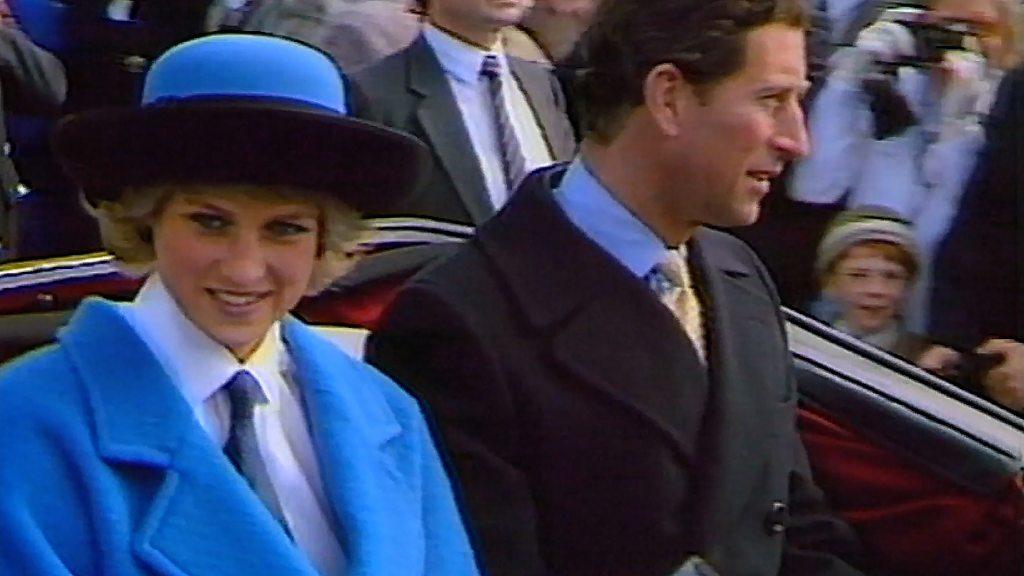Archaeologists search for lost traces of Glasgow Garden Festival
- Published

The 120-acre-site was dismantled after five months
Archaeologists excavating a Glasgow park have begun to uncover traces of a landscape hidden beneath the turf.
They are not looking for traces of an ancient settlement - but of the Glasgow Garden Festival held 34 years ago.
The University of Glasgow team is trying to fill gaps "between written records and memories" of the event.
The 1988 festival on the south of the River Clyde was seen as "pivotal" in re-imagining Glasgow after the loss of heavy industry in the city.
Excavations and geophysical surveys to identify what remains of the event began on Monday at Festival Park, on Govan Road.
The council-owned park is the last undeveloped part of the original 120-acre garden that inspired Glaswegians and visitors to see the city and its culture in a new light.
Declining dockyards were turned into a green space with a theme park, daily live performances, and artworks inspired by a city rich in heritage and humour.
The festival, which was opened by Prince Charles and Princess Diana, was dismantled after five months of colour and excitement, and 4.3m visitors, in the summer of 1988.
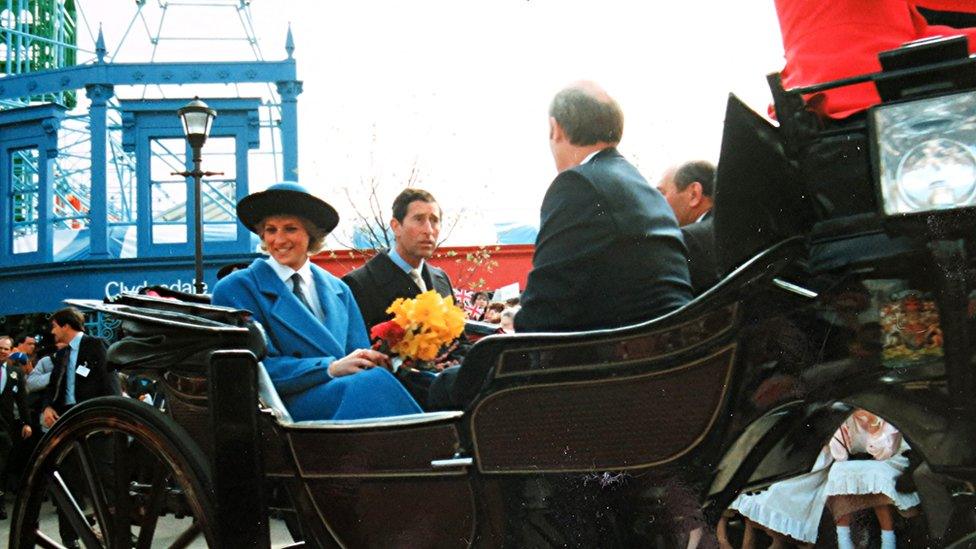
The official opening day of the festival was attended by Prince Charles and Princess Diana
That part of the river has since been transformed from a post-industrial landscape to a shiny modern destination, with the Scottish Event Campus on the north of the river and the Glasgow Science Centre, media headquarters including BBC Scotland, hotels and homes on the south.
The After the Garden Festival, external project and the University of Glasgow are working with Glasgow City Heritage Trust to document the festival and trace what happened to the artworks commissioned for the festival.
Dr Kenny Brophy, the senior lecturer in archaeology who is leading the excavation, has childhood memories of the garden festival.
Speaking on BBC Radio's Good Morning Scotland, he said: "I'm pretty sure that people's memories are starting to fade and I am hoping we can both provoke those memories and also start to fill in some of the gaps of the festival site."
His team built a trial trench on the first day of excavations and has already found cobbles from the original landscaping.
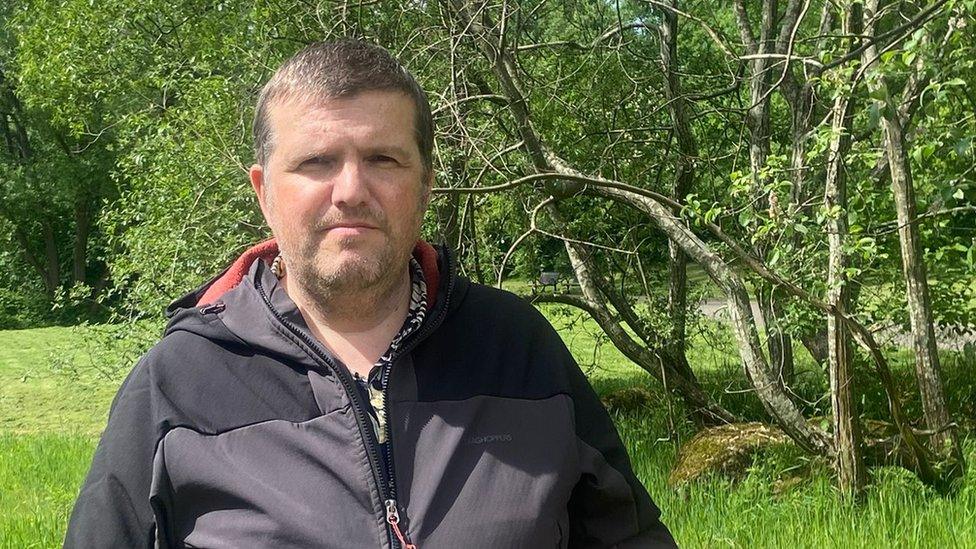
Dr Kenny Brophy said contemporary archaeology was becoming more common
"First of all, we are doing some geophysical surveys to find out if anything still survives within the grassy spaces in the park," he said.
"For instance, today and yesterday we were working in the area that used to house the Bowmore distillery site and also a Highland restaurant, that I have no memory of being there as a child.
"Hopefully there are still some traces of that."
Maintained for the community as part of the festival's legacy, the park once held a miniature railway line, a replica Roman bathhouse and artworks such as scarecrows and the Ancient Forester.
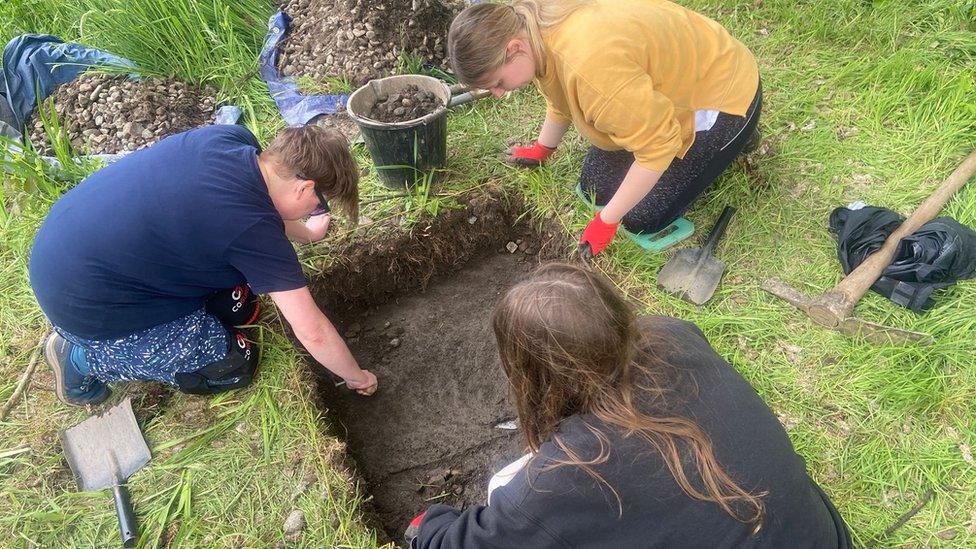
Students have been working on the dig in Festival Park
Excavations of "watery places" will be carried out in the sediment of a lochan, stream and waterfall that can still be found at the south end of Festival Park.
Dr Brophy said: "We are hoping that as we get to the bottom of the deposits there over the next few days we might find some 1987 coins and some other goodies that were thrown in by visitors to the festival."
Students from the university helping with excavations have enjoyed a return to field studies after Covid and the novelty of excavating something within living memory of passersby.
Scarlett Lord, 21, a fourth-year student said: "What's nice is being in Glasgow and being back out in the field, people who have walked past remember the Glasgow Garden Festival happening and it brings back memories."
Although excavations are more likely to target artefacts from older civilisations, contemporary archaeology was becoming more common, Dr Brophy said.
"What we really are showcasing is [using] the techniques of archaeology to shed light on all sorts of things, regardless of how recent they are," he said.
"It is amazing how quickly oral memories start to fade, and also not every process is documented properly. There's not much written down or recorded anywhere about the actual nitty gritty of the process of decommissioning the festival site.
"Archaeology is very good at filling gaps between written records and memories, even for things that happened very recently."
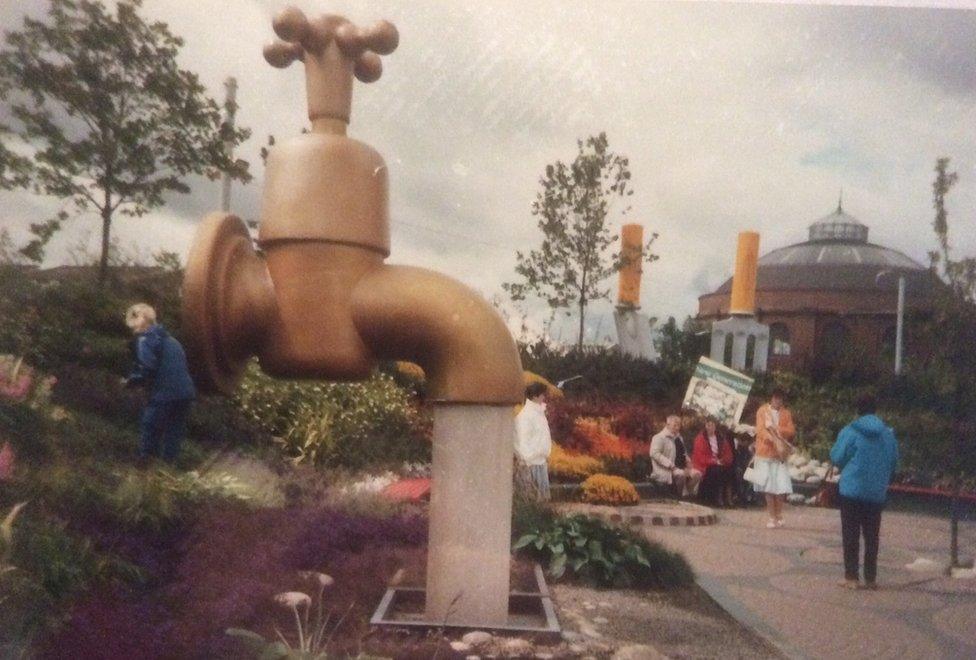
Outsize artworks brought a sense of fun to the gardens
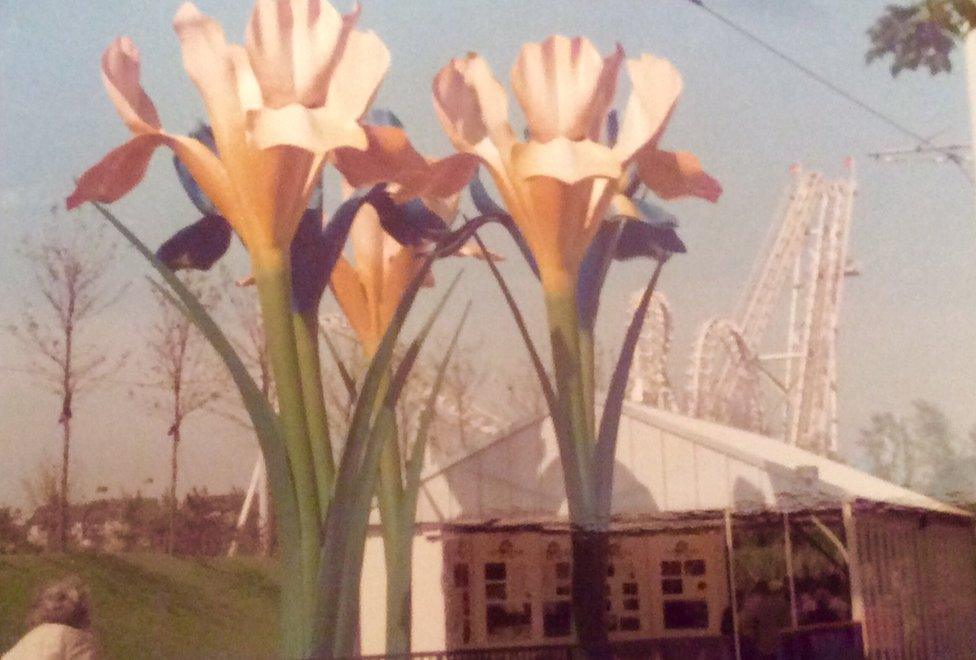
The gigantic irises found a new home in Glenrothes
The project also aims to track down artefacts from the site, including the hundreds of commissioned artworks that helped spark Glasgow's cultural reinvention.
"After it finished, it wasn't just destroyed. It exploded all over the world into lots of different places, and what we are trying to do is track down the stories of the objects and the art works and what's happened to them in the last 30-odd years," he added.
The Coca-Cola rollercoaster was sold to a theme park in Suffolk, the Clydesdale Bank Anniversary Tower went to Rhyl in Wales, and the giant irises now stand by a roundabout in Glenrothes.
A huge floating tap is among the many artworks that have yet to be traced.
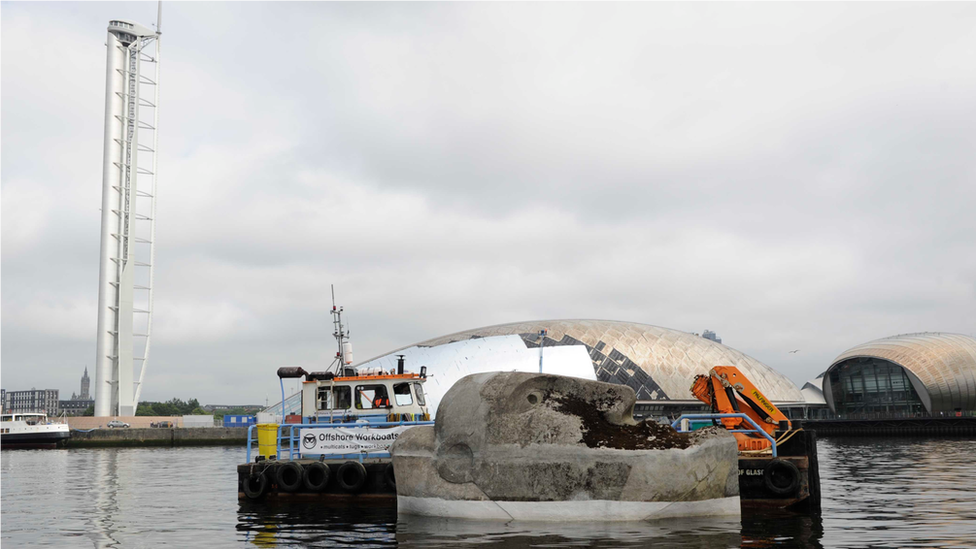
A giant floating head by artist Richard Groom returned to the river
Even plants found new homes, with some of the rarer ones continuing to flourish in Glasgow's Botanic Gardens.
Last year, a giant floating head by artist Richard Groom returned to the river after being abandoned at Rothesay Dock East for many years.
After the Garden Festival, then-project leader Lex Lamb appealed to people to submit information about items from the festival to their website, external to help "create a lasting resource".
He added: "We want to find out how many of these have survived around the UK, and record as much detail of the features - both surviving and destroyed - as possible."
BBC Scotland presenter Kaye Adams told listeners to her Mornings radio programme that at the end of the festival, where she was working as a reporter for STV, she had bought a life-sized papier mache woman she calls Irene.
It still lives in her living room, having moved with her from home to home for more than three decades.
Relive the memories
Members of the public are invited to visit the excavation site from 10:00 to 15:00 on Saturday, when they can share their own memories, photographs and memorabilia from the festival for the archive.
"We hope that this will revive memories of a really pivotal and important part of Glasgow's modern history. And if we can do that through this project, then I think that's a really positive aspiration," Dr Brophy said.
The team also hopes to inspire a revitalisation of Festival Park.
"Maybe also we can make the park a celebration of the festival," Dr Brophy said.
"The waterfall, the streams and so on are still there, but there's not any signage or information, so it would be really great for Glaswegians to be able to go to the park and be able to relive those memories in the park itself."
- Published23 August 2021
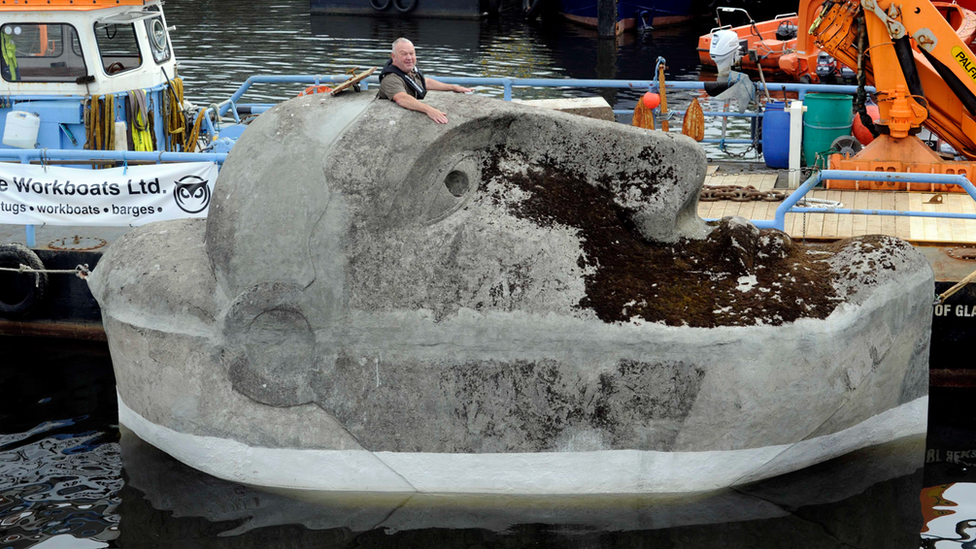
- Published26 April 2018
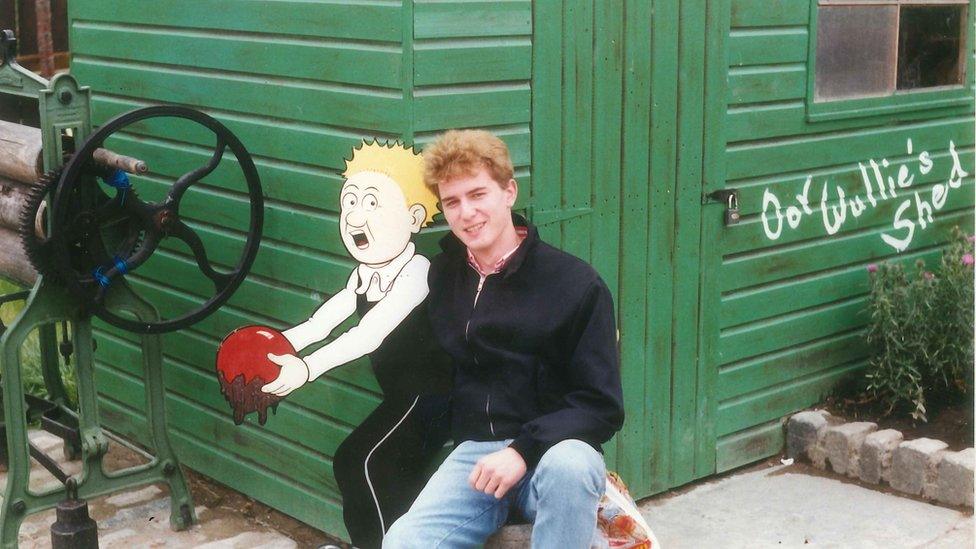
- Published26 April 2018
